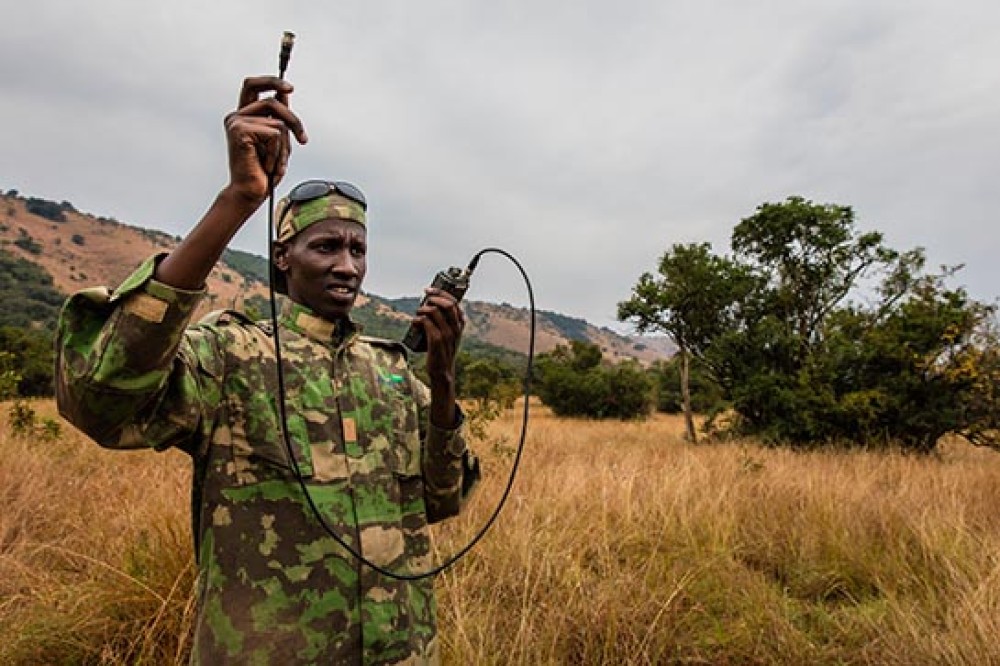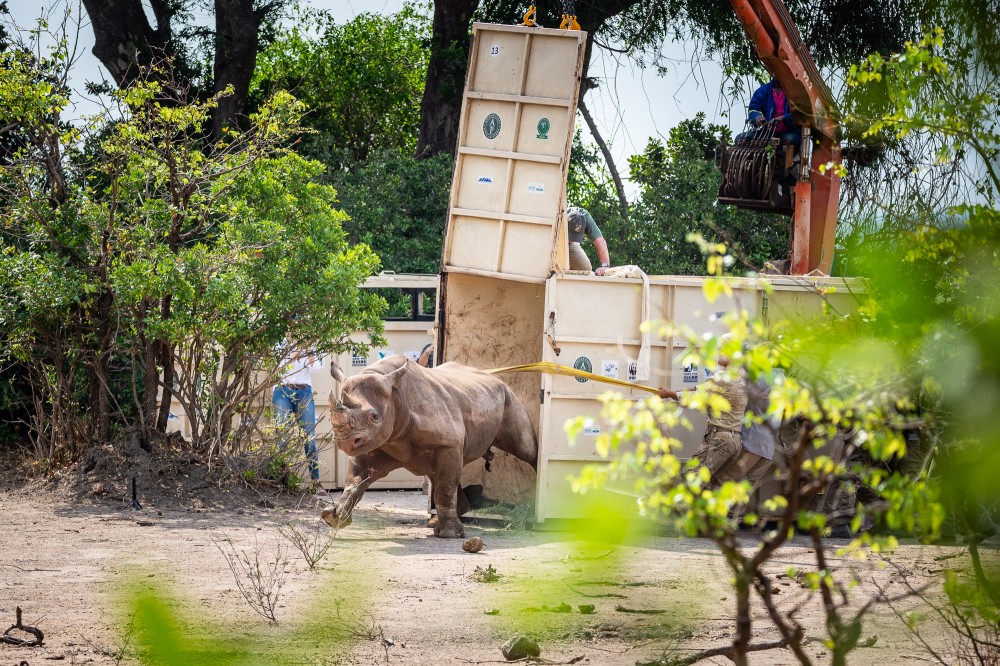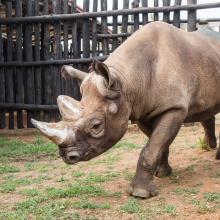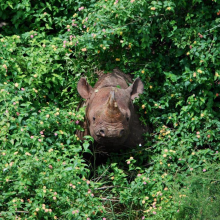Save the Rhinos
African Parks is creating safe havens for black rhinos by securing national parks and protected areas where they live, and reintroducing them to safe areas where they have gone locally extinct. Learn more about our work and what you can do to help.
Rhino Conservation
At the beginning of the 20th century, black rhinos numbered around 850,000 across the African continent. However, by 1960 intensive poaching reduced their numbers to an estimated 100,000 individuals, and by 1995 fewer than 2,500 remained. Since then, thanks to persistent conservation efforts in the form of breeding and range expansion programmes the species has made a comeback from the brink of extinction 25 years ago and now numbers between 5,000 and 5,500 today.
Despite these efforts, all rhino species are still threatened with extinction as the illicit trade in rhino horn has surged dramatically over the last 10 years. Over 96% of Africa’s rhinos occur in just four countries: South Africa, Namibia, Zimbabwe, and Kenya. It is not only vital that poaching stops for the long-term survival of the species, but we need to continue expanding populations into their historical range which can only be accomplished through securing safe places for their return.
With the support of our partners, we have reintroduced several populations of black rhinos into their former ranges and plans to do more are on the horizon. Black rhinos are currently found in three of the 17 parks under our management - Majete and Liwonde in Malawi, Akagera in Rwanda - and were reintroduced to all three parks after decades of poaching had completely eliminated them
Sign Up To Receive More Good News Like ThisHow We're Saving the Rhinos
Creating safe havens to stop poaching
 © Marcus Westberg
© Marcus WestbergProtecting all wildlife from illegal hunting is one of our top priorities in all of the parks we manage. In Liwonde National Park in Malawi, for example, we fenced the park, hired and trained a larger and better-equipped ranger unit, and have utilised a suite of advanced technological methods to monitor wildlife and reduce illegal hunting. African Parks assumed management of Liwonde in 2015, in partnership with Government, and in the last three years not one rhino or elephant has been lost to poaching.
Investing in local communities
 © Marcus Westberg
© Marcus WestbergAfrican Parks is typically the largest employer in every place in which we work; we invest in education, healthcare and infrastructure - to provide effective park management and attract tourism to the parks – all of which benefits the local communities. By helping to bring jobs, schools, and revenue to the areas around protected areas, we are creating partnerships with local communities who are buying-in to the long-term conservation of their national parks. This discourages both active and indirect assistance of those looking to illegally hunt wildlife, as they benefit directly from the parks’ presence and the high-value wildlife that live there.
Reintroducing rhinos to historic habitats
 © Kyle de Nobrega
© Kyle de NobregaAfrican Parks has spearheaded several historic translocations of black rhinos, and will continue to do so in the future. In 2017, we led the effort to bring back rhinos to Akagera National Park in Rwanda after a 10-year absence. In 2019, we translocated five additional rhino from European zoos to Akagera to bolster the genetics of the population. In Malawi, we protect the country’s entire population of rhinos. In 2003, we reintroduced rhinos back to Majete Wildlife Reserve, and in 2019 we translocated a further 17 black rhinos to Liwonde National Park to expand the species range and improve the population genetics.
The Parks
-
 Akagera National ParkIn 2017, we reintroduced 18 Eastern black rhinos to Akagera, in partnership with the Howard G Buffett Foundation, bringing them back to Rwanda after a 10-year absence. Just four months later, one of the females had a calf – the first to be born in the country in over a decade. In 2019, we translocated a further five black rhinos from European zoos to Akagera. This group, being captive-bred, will be closely monitored as they progress through a series of bomas and sanctuaries for a smooth adjustment to a life in the wild.
Akagera National ParkIn 2017, we reintroduced 18 Eastern black rhinos to Akagera, in partnership with the Howard G Buffett Foundation, bringing them back to Rwanda after a 10-year absence. Just four months later, one of the females had a calf – the first to be born in the country in over a decade. In 2019, we translocated a further five black rhinos from European zoos to Akagera. This group, being captive-bred, will be closely monitored as they progress through a series of bomas and sanctuaries for a smooth adjustment to a life in the wild. -
Liwonde National ParkMalawi saw its last rhino poached in the late 1980s. In an effort to bring the species back to the country, reintroductions from South Africa to Liwonde began in 1993. When African Parks assumed management of Liwonde, in partnership with Government in 2015, there was a very small founder population present, which we bolstered with 17 additional individuals from South Africa in 2019, expanding the species range and improving population genetics.
-
 Majete Wildlife ReserveIn 2003, when African Parks first assumed management of Majete in partnership with Government, two black rhinos were translocated from Liwonde to Majete. Several translocations were carried out over the years to grow this population. By 2019 the population had flourished to the point where two male rhinos were exchanged between Majete and Liwonde to increase the genetic viability of both populations. Since 2003, not one rhino has been lost to poaching, a testament to our rangers and the strong community support we have gained over the years.
Majete Wildlife ReserveIn 2003, when African Parks first assumed management of Majete in partnership with Government, two black rhinos were translocated from Liwonde to Majete. Several translocations were carried out over the years to grow this population. By 2019 the population had flourished to the point where two male rhinos were exchanged between Majete and Liwonde to increase the genetic viability of both populations. Since 2003, not one rhino has been lost to poaching, a testament to our rangers and the strong community support we have gained over the years.